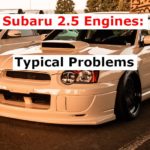2.0 EcoBoost vs 2.5 Hybrid- Which Engine is Better
Many new models in the Ford lineup, including the Escape and the Maverick, can be either equipped with the 2.0-liter EcoBoost (2.0L Ti-VCT GTDI I-4) engine or the 2.5-liter hybrid engine (2.5L iVCT Atkinson Cycle I-4 (Plug-In) Hybrid). T
The hybrid powertrain in the Escape can either be a Plug-in Hybrid Electric Vehicle (PHEV) or a Fully Hybrid Electric Vehicle (FHEV) similar to the one found in the Maverick.
2.0 EcoBoost vs 2.5 Hybrid- Which Engine is Better?
2.0 Ecoboost is better for you if you’re looking for a powerful engine that has a good towing capacity, but isn’t too economical. 2.5 Hybrid is a good choice for you if you want a fuel-efficient vehicle, but with less power.
The hybrid powertrains are highly fuel-efficient, so fuel costs will be much lesser for the hybrid engine. This efficiency also translates to a better range which means fewer stops at the gas station.
Hybrid powertrains do not pollute as much as conventional powertrains either. As a result, you can reduce your carbon footprint, and they get tax concessions and incentives from the governing bodies to promote its widespread adoption.
On the other hand, the EcoBoost engine is a lot more powerful and responsive. Compared to the hybrid powertrain, it is much more agile, and you can really feel the difference while overtaking on the highways.
Cars equipped with conventional powertrains are much cheaper upfront, and the maintenance costs are also comparatively low. But the lower fuel efficiency increases the fuel costs by a considerable margin. Hybrid cars also tend to hold their value much better and depreciate at a much slower pace in comparison.
Also read: Are Fords Expensive to Maintain? (Exact Costs)
2.0 EcoBoost vs 2.5 Hybrid: The Technical Facts
The 2.0-liter (122 cu.in.) inline-four EcoBoost engine produces 250 hp @5,500rpm and 280 lb-ft of torque @3,000rpm in the Ford Escape. It produces 250 hp @5,500rpm and 277 lb-ft of torque @3,000rpm in the Bronco Sport and the Maverick. It is paired with an eight-speed automatic transmission with SelectShift and paddle shifters.
The engine block and the cylinder head are made out of aluminum. Air is force inducted into the engine using a turbocharger. Fuel is injected into the engine using direct injection, and it has a compression ratio of 10.0:1 in the Bronco Sport and the Escape. In the Maverick, it has a compression ratio of 9.3:1. It runs on regular unleaded fuel, but premium fuel is recommended for optimum functioning of the engine.
In the Escape, the 2.5-liter (152 cu.in.) Atkinson cycle inline-four-cylinder hybrid engine produces 165 hp @6,250rpm and 155 lb-ft of torque @4,000rpm. Combined with the electric motor, it produces 200 hp in the FHEV, and 220 hp in the PHEV respectively.
In the Maverick, it produces 162 hp @5,600rpm and 155 lb-ft of torque @4,000rpm. Combined with the electric motor, it produces 191 hp in total. It is paired with a PowerSplit electronic continuously variable transmission (eCVT).
Trending Video: How to Easily Bring Back to Life any Old Car Battery and Save Tons of Money (click to watch)
In an Atkinson cycle engine, the intake valve remains open, at least till the piston completes 20 to 30 percent of its upward travel during the compression stroke. As a result, some of the fresh air sucked into the engine is allowed to escape.
It shortens the intake stroke but combined with a full-length power stroke, it increases the efficiency of the engine, allowing us to extract more energy out of each drop of fuel. But it also means that the peak horsepower and torque will be lowered, and the electric motor will have to compensate for this loss of power.
The engine block and the cylinder head are made out of aluminum. The engine is naturally aspirated, and fuel is delivered to the engine using sequential multiport electronic fuel injection. It has a relatively high compression ratio of 13.0:1. It is tuned to run on regular unleaded fuel.
The electric motor used in the hybrid powertrain is a permanent magnet electric traction motor called Ford In House E_Motor. It has a peak output of 94kW and 173 lb-ft. The FHEV gas-only Maverick and Escape get a 1.1-kWh lithium-ion battery. But the plug-in hybrid (PHEV) Escape boasts a bigger 14.4kWh battery.
The liquid-cooled lithium-ion battery pack is located in the passenger side under the cabin. The plug-in hybrid battery supports 110-volt Level 1 charging and 240-volt Level 2 charging.
Also read: Are EcoBoost Engines Good? (+ Problems They Have)
2.0 EcoBoost vs 2.5 Hybrid: Performance
The EcoBoost wins on the performance front, but the hybrid powertrain is not that bad. Ecoboost has better acceleration off the line, and it can reach higher speeds with much less effort.
The hybrid powertrain prioritizes low-speed comfort, refinement, and fuel efficiency over outright performance. So it is better suited in the city among slow speed traffic. The AWD system is only available with the EcoBoost engine in the Maverick. It is also available with the FHEV Escape but not the PHEV variant.
The 2.5-liter hybrid can tow 1500 lbs in the Escape and 2000 lbs in the Maverick. But the 2.0 EcoBoost on the other hand, is rated for a maximum of 3,500 lbs in the Escape and 4,000 lbs in the Maverick (with optional 4K Tow package). So if you plan to tow heavy objects, then the EcoBoost will be the better choice.
2.0 EcoBoost vs 2.5 Hybrid: Fuel Economy
In the Ford Escape, the 2.5-liter hybrid engine has an EPA-Estimated fuel efficiency rating of 44 mpg in the city and 37 mpg on the highway in the FWD variants. In the AWD variant, it is rated for 43 mpg and 37 mpg. The plug-in hybrid variants are rated for 102 MPGe. In the Ford Maverick, the same engine is rated for 42 mph in the city, and 33 mpg on the highway.
In the Maverick, the 2.0-liter EcoBoost engine is rated for 23 mpg in the city and 30 mpg on the highway for the FWD variants. In the AWD variants, it is reduced to 22 mpg in the city and 29 mpg on the highway.
| 2.0 EcoBoost | 2.5 Hybrid | 2.0 EcoBoost AWD | 2.5 Hybrid AWD | |
|---|---|---|---|---|
| In the City | 23 MPG | 44 MPG | 22 MPG | 43 MPG |
| On the Highway | 30 MPG | 37 MPG | 29 MPG | 37 MPG |
Equipping the hybrid powertrain will certainly reduce your fuel costs by a huge margin in the long run. It will also reduce the pollution that is being emitted.
Also read: 7 Best Fords with a Panoramic Sunroof (+ Photos)
2.0 EcoBoost vs 2.5 Hybrid: Reliability
Both of the engines have been around for the better part of the last decade. Both the engines were introduced in the early 2010s, and Ford has managed to iron out most of the niggles that were previously reported. They have come a long way in terms of refinement, efficiency, and reliability.
Some of the most common problems reported in the early generations of the 2.5-liter engine were,
1. Excessive Coolant Consumption
The coolant is required to be topped up once or twice a year, compared to once every few years for other cars. The exact reason for this was never revealed, although, it may have something to do with the porosity of the engine block.
This has been fixed in the newer generations, but if you have an old 2.5 Duratec I4, keep an eye on the coolant level.
2. Transmission Hard Shifting
This problem was only for the older models with the six-speed automatic transmission. The fluid would leak from the output shaft seal, which would cause erratic shifting and slippage. It is not a problem in the newer models equipped with CVT.
Some of the most common problems reported in the 2.0-liter EcoBoost engine are,
1. Cracked Exhaust Manifold
The exhaust manifold is integrated into the cylinder head. The temperature gets excessive during towing or driving up inclinations. Over repeated cycles, the manifolds develop hairline cracks. This causes a lack of back-pressure, which leads to loss of acceleration, and the turbo will not be able to function properly either.
2. Low-pressure Fuel Pump (LPFP)
The fuel filter inside the fuel tank can easily get clogged, which forces the LPFP to overwork itself. It will put additional pressure on the motor, causing failure.
3. Carbon Build-up
The fuel is delivered using direct injection into the cylinder and skips the intake valves. This causes a build-up of carbon inside the intake valves, restricting airflow.
4. Boost Control Solenoid Failure
The boost solenoid is an electrical component that controls the amount of boost being produced. Once it fails, the boost produced will vary and can even render the car undrivable.
2.0 EcoBoost vs 2.5 Hybrid: Maintenance
The EcoBoost engines are directly injected, which means they will have to be cleaned, and spark plugs need to be changed more frequently. The interval between oil changes is also much shorter for the EcoBoost engines, as they are under more stress.
In the hybrid powertrain, the load is shared between the engine and the motor, so the engine will not require as much maintenance. But the hybrid system and the extra electrical components require regular maintenance.
2.0 EcoBoost vs 2.5 Hybrid: Lifespan
Both the engines will easily last 100k+ miles if regular maintenance is carried out in the correct intervals. Although some parts that are prone to failure, such as the boost control solenoid may need replacement after 70k-80k miles.
2.0 EcoBoost Pros and Cons
Pros:
- Produces more power
- Can tow a lot more weight
- Cheaper than a hybrid powertrain
Cons:
- Less fuel-efficient
- Emits more pollution
- More frequent maintenance
2.5 Hybrid Pros and Cons
Pros:
- Highly fuel-efficient
- Better for the environment
- Better resale value
Cons:
- It is not as powerful
- Cannot tow heavier objects
- More expensive option of the two






